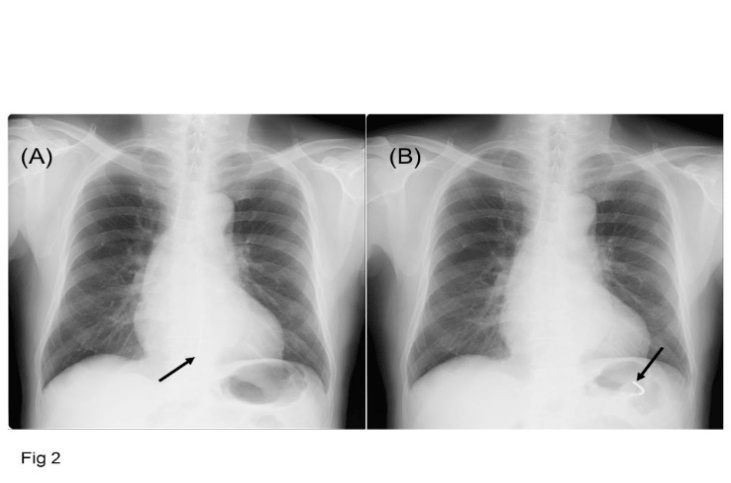

8,9 Rarely, gastric lipomas may also ulcerate and produce a bull’s eye appearance. 8 Kaposi’s sarcoma and carcinoid tumors have also been documented to produce a gastric bull’s eye appearance.

Metastatic lesions from melanoma and lymphoma. Processes.This differential diagnosis is broad and includes gastric This bull’s eye appearance has been described with many disease Ulcerated intramural masses can produce a target or bull’s eyeĪppearance (Figure 4) on upper gastrointestinal barium examinations. Within the stomach forming central collections of oral contrast within Intraluminal diverticulum, or esophageal duplication. 7 The double-barrel esophagusĪppearance can also be seen with intramural esophageal abscess, This entity can occur in the setting of a coagulopathy,Įmetogenic injury, trauma, instrumentation, ingestion of foreign bodiesĪnd, rarely, spontaneously. 6Įsophageal dissection is most commonly seen in middle-aged or elderly

(Figure 3) of the esophagus is due to the visualization of aīarium-filled, intramural dissecting channel separated from the trueĮsophageal lumen by a lucent line, the mucosal stripe. 5 The double-barrel radiographic appearance This rare condition was first described by MarksĪnd Keet in 1968. “double-barrel esophagus” classically refers to the radiographicĪppearance of a dissection between the esophageal mucosa and submucosa Lumen, mimicking a corkscrew on barium studies of the esophagus (Figure These abnormal contractions segment the normal esophageal Peristalsis followed by simultaneous, repetitive, ineffectiveĬontractions. 3 DiffuseĮsophageal spasm is characterized on manometry by periods of normal These abnormal contractions of varying amplitude occur in diffuse esophageal spasm, a rare esophageal motility disorder. Simultaneous, nonperistaltic contractions within the esophagus. “corkscrew” sign is the visual manifestation of lumen-obliterating, 2 Secondary achalasiaĪffects patients much less commonly and can be caused by entities suchĪs esophageal carcinoma and Chagas disease. ProposedĬauses include neuronal degeneration, viral infection, genetic Loss of inhibitory neurons in the esophageal myenteric plexus. The lack of lower esophageal sphincter relaxation is likely due to a Primary achalasia, the more common etiology, is idiopathic. There are both primary and secondary forms ofĪchalasia. On imaging and manometry, achalasia is further characterizedīy esophageal aperistalsis and failure of the lower esophageal Smooth tapering of the distal esophagus resembles the beak of a bird The level of the esophageal hiatus in the setting of achalasia. “bird’s beak” sign is a classic finding on esophagrams it describes aĭilated proximal esophagus with a smooth-tapered, distal esophagus at Hepatobiliary and pneumoperitoneum signs are then reviewed. Signs from proximal to distal within the gastrointestinal tract. This article organizes the gastrointestinal To familiar objects, such as the “moulage” and the “colon cut-off” Known to the authors in Boston.Signs that do not conjure a resemblance “football” and “cobblestone” signs, for instance, are especially well Pathologies whose imaging manifestations resemble everyday objects. Objects to describe visual findings enables radiologists both to arriveĪt a correct diagnosis and to effectively convey such diagnosticĪrray of classic signs associated with gastrointestinal tract Many classic radiologic signs derive from analogues to objects commonlyĮncountered in everyday life eg, the “comb” sign. Today when seen on multidetector CT (MDCT) images. Plain-film signs, such as the “accordion sign,” are also commonly cited Reviewing images from cross-sectional modalities. Though many of these signs were initiallyĭescribed on plain films, they are still used daily by radiologists That represent visual manifestations of myriad underlying The years, radiologists have established many classic imaging signs


 0 kommentar(er)
0 kommentar(er)
